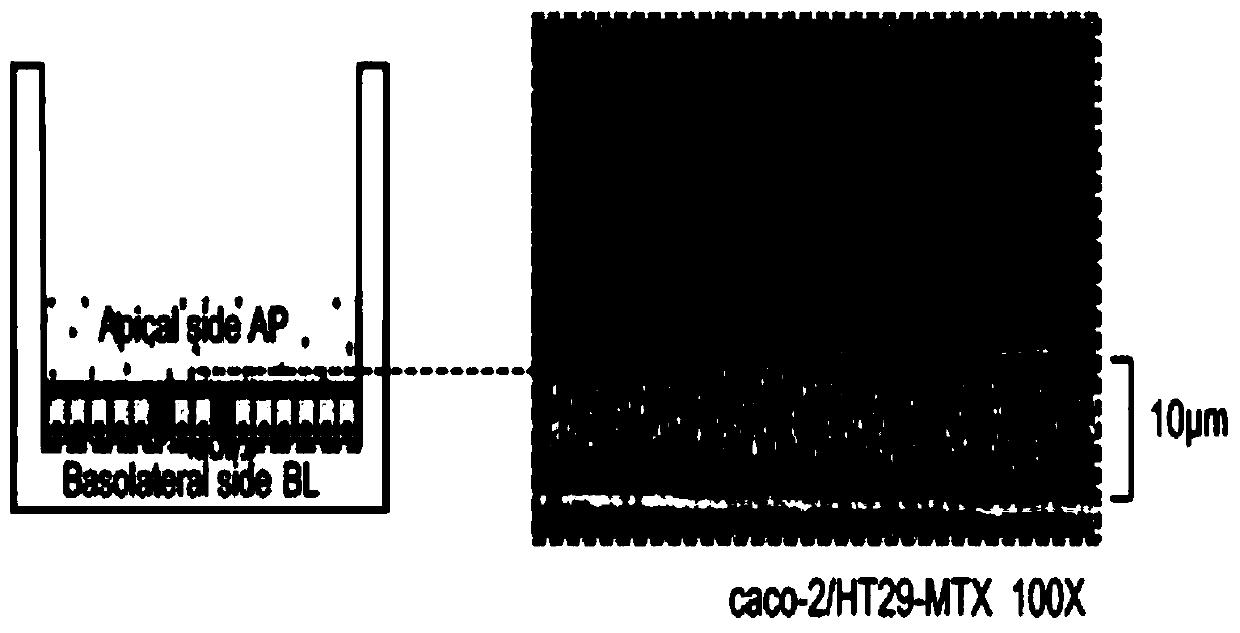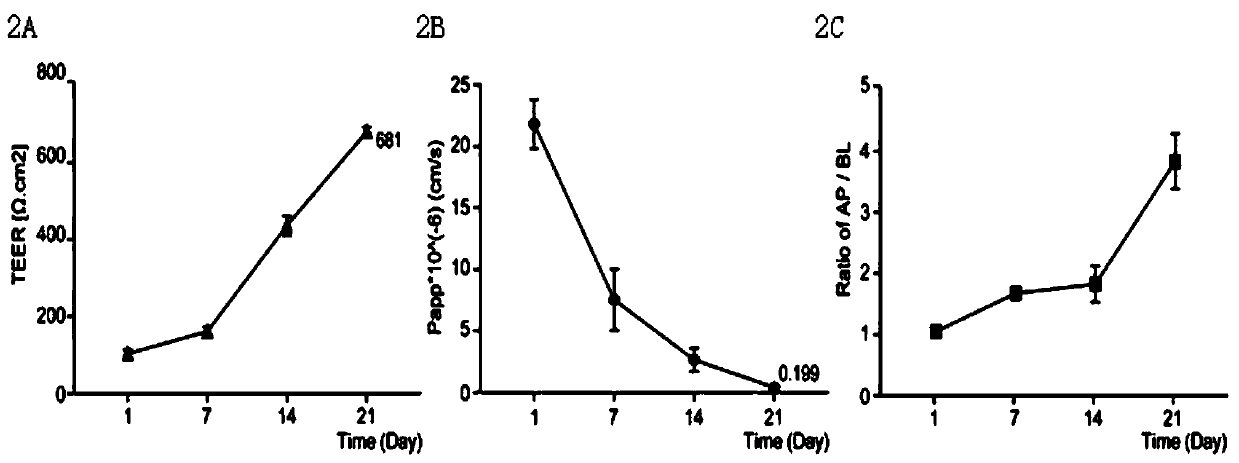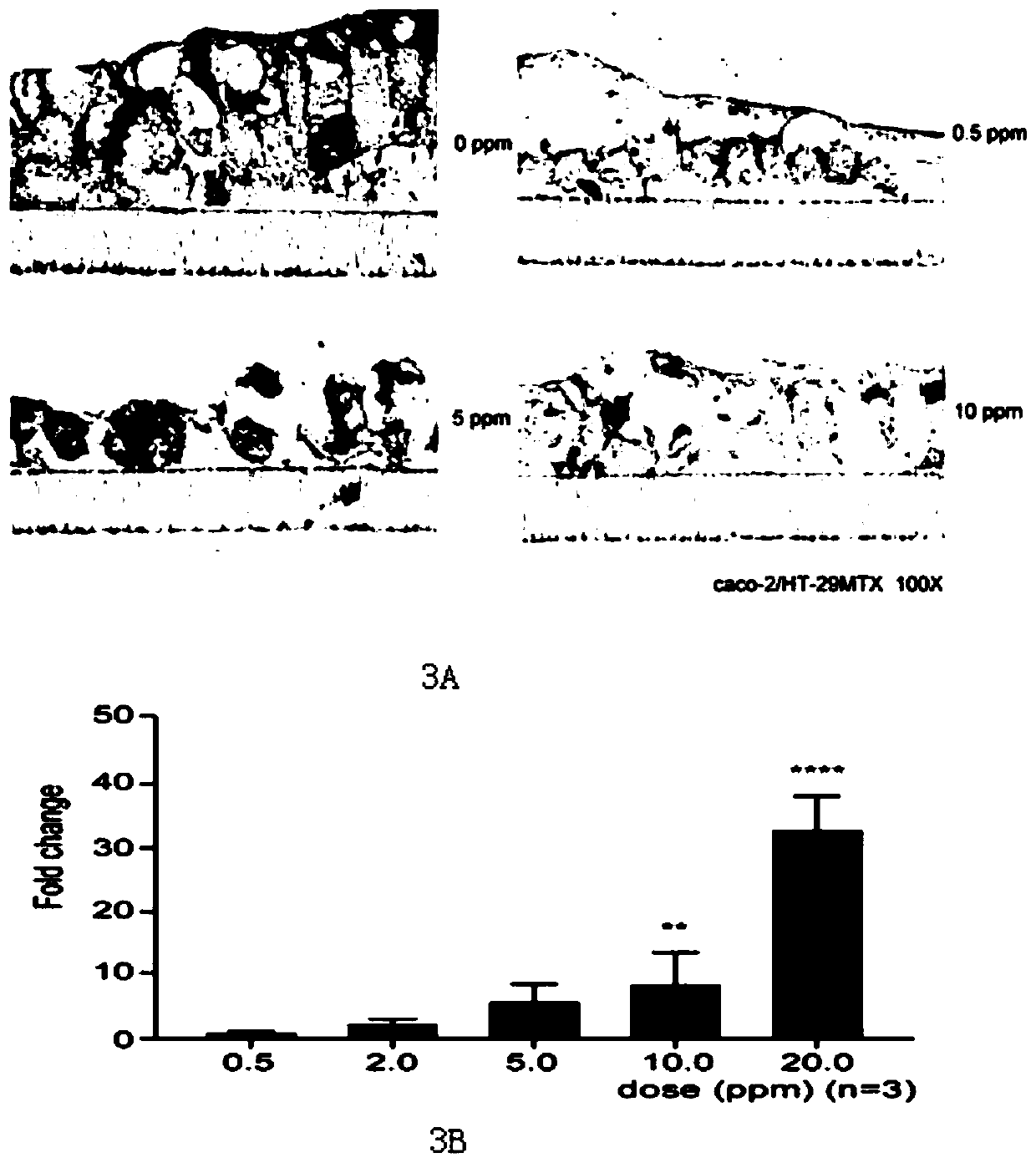Establishment method of heavy metal oral bioaccessibility detection system
A technology for establishing methods and heavy metals, applied in biological testing, measuring devices, material inspection products, etc., can solve the problem of affecting the accuracy of biological accessibility detection and health risk assessment, difficult to reflect the absorption of human body, and ignoring the impact of chemical transformation. and other problems, to achieve the effects of predicting toxic effects, detecting biological accessibility, and controllable experimental conditions.
- Summary
- Abstract
- Description
- Claims
- Application Information
AI Technical Summary
Problems solved by technology
Method used
Image
Examples
Embodiment 1
[0037] Embodiment 1 Method for establishing a detection system for oral bioaccessibility of heavy metals
[0038] A method for establishing a heavy metal oral bioaccessibility detection system is provided, comprising the following steps:
[0039] 1.1 Construct a human in vitro gastrointestinal digestion model and a 3D model of human small intestinal epithelial cells;
[0040] The in vitro digestion model is established based on the static in vitro digestion InfoGest2.0 method. Before the start, it is necessary to measure the activity of pepsin and trypsin, the concentration of bile salt and the volume of acid and alkali required to adjust the pH to a specific value to control the batch difference between experiments and improve Experimental repeatability. Prepare 1.25× simulated saliva fluids (SSF) stock solution, (1× simulated saliva contains 15.1mM potassium chloride, 3.7mM potassium dihydrogen phosphate, 13.6mM sodium bicarbonate, 0.15mM magnesium chloride hexahydrate, 0.0...
Embodiment 2
[0056] The establishment method of embodiment double heavy metal oral toxicity detection system
[0057] A method for establishing a heavy metal oral toxicity detection system is provided, comprising the following steps:
[0058] 1.1 Construct in vitro digestion model and 3D model of human intestinal epithelial cells;
[0059] 1.2 Apply different concentrations of heavy metals to the in vitro digestion model to simulate the human digestion process, and collect heavy metal-containing digestive juice;
[0060] 1.3 After applying the digestive juice containing heavy metals to the human small intestinal epithelial cell in vitro absorption model, culture it for 4-24 hours to simulate the small intestinal absorption process, and measure the change curve reflecting the degree of toxic damage of the cell model with the applied concentration of heavy metals;
[0061] 1.4 Track the concentration changes of heavy metals / digested products with heavy metal characteristics at each stage of...
Embodiment 3
[0073] The quality control involved in the system application process of embodiment three
[0074] The invention performs quality control by calculating the recovery rate in the digestion / absorption stage to ensure the accuracy of the result. In the digestion stage, the concentration of heavy metals in the supernatant (digestion) obtained by centrifugation after digestion and the insoluble precipitate (chyme) after centrifugation is measured. The ratio of the total amount of heavy metals contained in the two to the content of heavy metals in the food sample is the recovery rate of the digestion stage. The recovery rate at this stage is required to be in the range of 0.9-1.1; the concentration of heavy metals in AP, BL and cells are measured respectively during the intestinal absorption stage, and the ratio of the sum of the three to the heavy metal content of AP added to the digestive juice is the recovery rate in the intestinal absorption stage. Stage recoveries ranged from 0...
PUM
 Login to View More
Login to View More Abstract
Description
Claims
Application Information
 Login to View More
Login to View More - R&D
- Intellectual Property
- Life Sciences
- Materials
- Tech Scout
- Unparalleled Data Quality
- Higher Quality Content
- 60% Fewer Hallucinations
Browse by: Latest US Patents, China's latest patents, Technical Efficacy Thesaurus, Application Domain, Technology Topic, Popular Technical Reports.
© 2025 PatSnap. All rights reserved.Legal|Privacy policy|Modern Slavery Act Transparency Statement|Sitemap|About US| Contact US: help@patsnap.com



